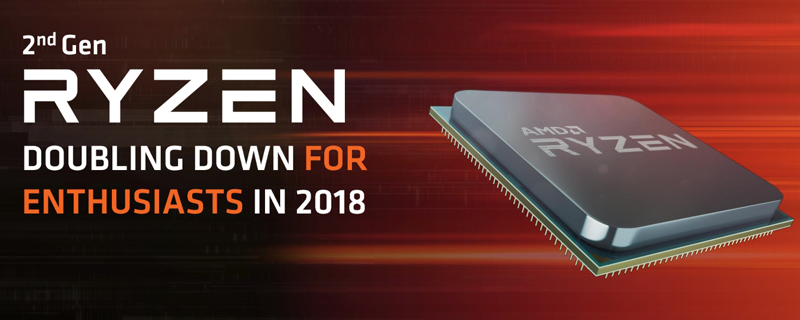AMD Ryzen 5 2600X and Ryzen 7 2700X Review
Conclusion
When AMD released the Ryzen there was much rejoicing as finally, after many many processors that didn’t quite cut the mustard, AMD had returned to the fray with a genuine challenger for the best processor around. Having finally climbed the mountain it is understandable that they have taken stock of the situation and looked at where they can revise and refine, rather than make wholesale sweeping changes.
The sheer number of cores on the original Ryzen meant that the tasks which utilised a heavy calculation base really shone on the Zen architecture. That did come at the cost of raw clockspeed though, because of power and thermal issues that are bound to crop up when you’ve got eight cores throbbing away. Anyone who looked at the speed of the originals and decided that 4.1 GHz isn’t as good as the 5 GHz you can normally attain on an Intel or the 4.5 GHz you get on the high core Intels and thus dismissed the Ryzen are clearly forum signature junkies. Ignore the clockspeeds and just look at the results and there was plenty of reasons we lauded it so highly.Â
The time away from the original Ryzen launch to today’s launch of the 2nd Generation and X470 chipset have enabled AMD to hone the rougher edges of the Ryzen CPUs – power draw, overclocking potential and thermals – and really unleash the potential that having so many cores on your die can bring. The Ryzen 5 2600X can hit 4.3 GHz whilst the Ryzen 7 2700X attained a monster 4.4 GHz. That’s only 100 MHz off of the kind of speeds we’ve seen from similarly core-heavy Intel offerings. The reduction in power draw leads to lower thermals, lower thermals give greater headroom, greater headroom is utilised by the AMD Precision Boost 2 to overclock the CPU to higher speeds in boost mode, or by us to overclock all the cores to levels unattainable on the preceding models. Take all the performance having 12 or 16 threads can bring and give it some extra megahertz and it is no surprise that the 2nd Generation Ryzen CPUs find themselves so high up in our graphs. Most beneficially this isn’t coming at a power draw cost, as the processors are more efficient than their forebears so you’re getting higher clockspeeds but for the same power draw.
We have to take a moment to mention our testbed motherboard used for today’s review, the ASUS Prime X470-Pro. A good looking motherboard with plenty of features all wrapped up in the white that the boss man loves so much, it is only enhanced by having an easy to use BIOS that enabled us to push the Ryzen 5 2600X and Ryzen 7 2700X to their limits in a reasonably short time frame, something hugely important to use when we’ve got so many reviews to bring you in such a short space of time.
If you were tempted by the AMD Ryzen CPUs but were put off by a couple of the places it was a little rough around the edges then know that the 2nd Generation has smoothed all the rough spots and really unleashed some monster processors on the market. If you were dismissive just because it’s from AMD and they have had a few misfires then you really need to take a closer look at the results and stop being so set in your ways. By any measure these are seriously good processors around which to base your system.
The Ryzen 7 2700X and Ryzen 5 2600X refine the already impressive Ryzen CPUs and, joined by the X470 chipset, should be considered by anyone looking for a huge amount of performance at a relatively modest investment.
Discuss your thoughts about the 2nd Generation of Ryzen CPUs on the OC3D Forums.




